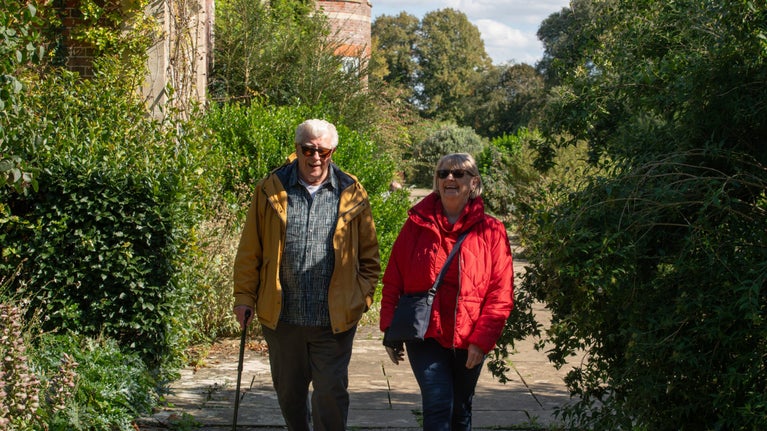
Become a member
Join today and help protect nature, beauty and history – for everyone, for ever. Enjoy access to more than 500 places with National Trust membership.
A welcoming house and garden set in an estate with stunning maritime views and lovely woodland walks.
Feock, near Truro, Cornwall, TR3 6QL

| Asset | Opening time |
|---|---|
| Garden | 10:00 - 17:00 |
| Car park, parkland and woodland walk | Dawn - Dusk |
| House | 11:00 - 16:00 |
| Café | 09:30 - 17:00 |
| Shop | 10:00 - 17:00 |
| Second-hand bookshop | 10:00 - 16:30 |
| Cornwall Crafts Association | 10:00 - 17:00 |
Please note that last entry is 30 minutes before closing
| Ticket type | With Gift Aid | Without Gift Aid |
|---|---|---|
| Adult (18+) | £18.70 | £17.00 |
| Child (5-17) under 5s free | £9.40 | £8.50 |
| Family (2 Adults and up to 3 children) | £46.80 | £42.50 |
| 1 adult, 2 children | £28.10 | £25.50 |
| Group (Adult 18+) | £16.15 | |
| Group (Child 5-17) | £8.08 |
| Ticket type | With Gift Aid | Without Gift Aid |
|---|---|---|
| £6.00 |
The Barn is available to hire for private functions, business meetings and community gatherings
Crofters Cafe serves freshly made hot food and light refreshments with teas and coffees. Indoor and outdoor seating available
Cycle parking is located outside visitor reception.
Assistance dogs only in the house. Dogs welcome in the parkland, woodland walks, garden, shop, bookshop, gallery and cafe courtyard
An ice cream kiosk is open on a seasonal basis near the parkland entrance
The plant shop is to the rear of the retail shop with a range of seasonal plants, garden ornaments and decorations
Trelissick shop stocks a range of homeware, fashion accessories, local products, kids activities and books
Opposite visitor reception
Blue Badge parking. Accessible toilet. Mobility scooter for hire on accessible garden route. Assistance dogs welcome in the house.
Map of accessible garden route available from visitor reception
Located opposite the visitor reception
A braille format history of the house is available
Approx. 20 accessible parking spaces close to visitor reception
Fixed induction loops are situated at all till points
Crofters cafe is situated near to the accessible parking spaces and visitor reception. There is level access to the indoor and outdoor seating at Crofters cafe
The shop is close to the accessible parking spaces. There is a slight slope leading down to the entrance of shop which is about 2 metres in length but is suitable for both mobility scooters and wheelchairs
Map of accessible garden route available from visitor reception
One Countryside Mobility Tramper and one powered mobility scooter available to hire for use in the garden, please call 01872 862090 to book.
Ramped access to the house
There are several benches in the garden and countryside
Two manual wheelchairs can be hired for use in the garden on a first come first served basis, call 01872 862090 if you would like to reserve a wheelchair. One wheelchair available in the house
Accessibility information to help you plan your visit to Trelissick. Find out about accessible parking, routes, facilities and resources including information on Tramper hire and mobility aids available.

Discover the dog-friendly estate at Trelissick, with parkland, woodland, winding garden paths, shoreline and beach to explore. Trelissick is a two pawprint rated place.

Find out more about events at Trelissick including Christmas, seasonal trails and activities.

Not a member? If you're planning a trip to Cornwall this year, buy a National Trust Explorer Pass to enjoy unlimited entry to Trelissick along with most of the other places in our care. With 4, 8 and 14-day options available, the pass can be tailored to fit your trip. Discover where you can visit with the Explorer Pass and how to buy yours.
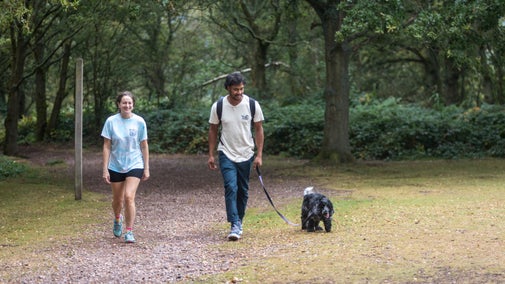
On this page you'll find all the information you need to book a group visit to Trelissick.

We hold the Good Journey Mark for welcoming car-free visitors. Travel a greener way and enjoy a 10% discount on your purchase of food or drink in the café. Plan your journey by train, bus, cycle or foot at Good Journey.

Woodland garden with formal lawns, herbaceous borders, exotic planting, an orchard and views over the River Fal.
Diverse countryside surrounded by the River Fal with a historic park, woodland, Iron Age promontory fort and 18th-century quay.
The south facing rooms are open as a place to sit and take in the view with refreshments from the house tearoom and the ground floor rooms host a modest collection.
Crofters Café offers a range of light refreshments, hot lunches, afternoon cream teas and packed lunches for children.
Shop with a wide range of gifts, local products, and plant centre along with Cornwall Crafts Association gallery.
One of the largest second-hand bookshops within the National Trust. 100% of money taken here goes directly to valuable conservation projects here at Trelissick
The house tearoom, with views of the River Fal, has a range of cakes and light refreshments. Please check house opening times.
Starting 16 September 'Your Trelissick’ is the second of two exhibitions in the house and will feature artwork, prose and memories submitted to Trelissick from visitors, volunteers and staff.
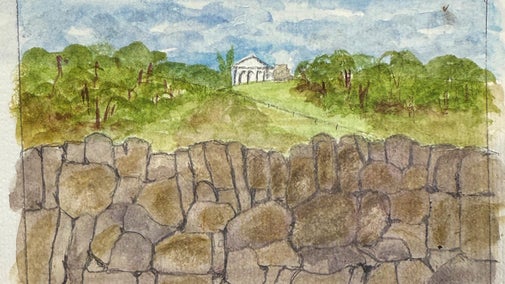
This autumn Trelissick will be hosting a series of talks celebrating Cornish figures and heritage and include a two-course lunch.
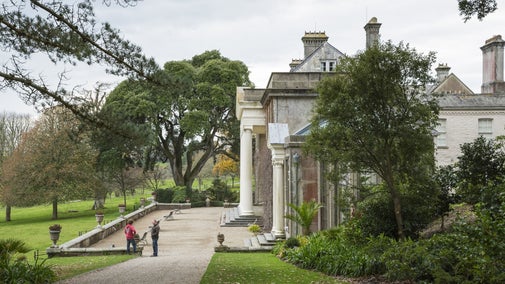
Cornish legend comes alive this October half term as Dark Cornwall create an immersive journey through the magic and myths of Cornwall along the winding paths of Trelissick garden.
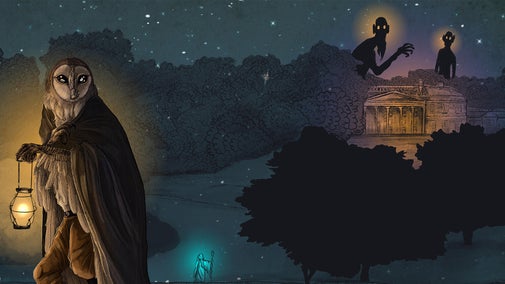
Discover all the things to do on a family day out to Trelissick. Explore the garden and house, or head out on an adventure around the countryside estate. Find out what family-friendly events are coming up and plan your visit to Trelissick.
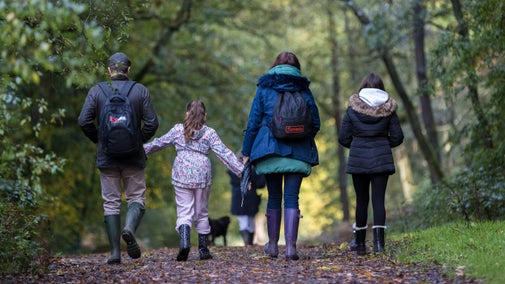
Discover peaceful lawns and tranquil orchard spaces in the garden. Stop for far-reaching maritime views at this green lookout point high above the River Fal estuary.
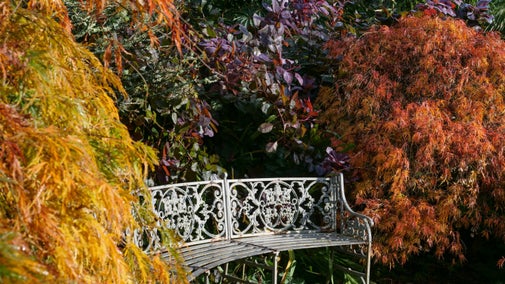
Visit the estate for walks with far reaching views. An abundance of wildlife fills the air with sounds at this green haven in Cornwall.
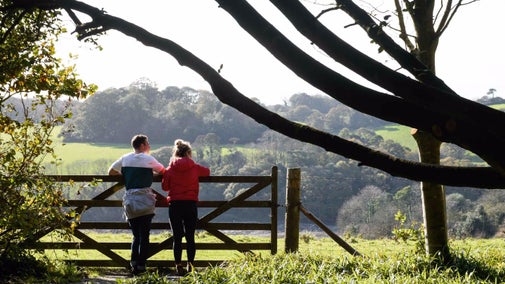
Enjoy a tea or coffee in the south-facing rooms while taking in the view from the eighteenth century house at Trelissick.

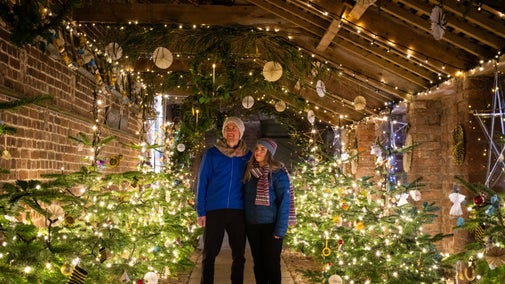
Find out where to buy food and drink, and browse for gifts and souvenirs, during your visit to Trelissick.

Wander tree-lined riverside paths, peeping through twisting oak branches to glimpse your destination of Roundwood – home to an Iron Age fort and 18th-century quay.

This gentle walk follows the River Fal and offers varying views to narrow creeks and wide expanses of water, also going inland to woodlands and grazed farmland.


A stay like no other, Trelissick Water Tower’s interior is just as intriguing as its exterior…

A restored water pump house in the heart of the Trelissick estate, close to the Fal Estuary.

Once the gardener’s cottage, now a cosy woodland retreat on the Trelissick estate.

Perfect for kayakers, this river-side cottage has its own quay for your kayak or canoe.

A neo-classic style lodge with a homely interior, set on the Trelissick estate.

A former Victorian gate lodge to the Trelissick estate encompassed by countryside walks.
70 years ago, in 1955, Ida Copeland generously gifted the garden and estate of Trelissick to the National Trust. This year we celebrate her donation with exhibitions that tell the story of both the Copeland’s Trelissick and the Trelissick we know...
Cornish legend comes alive this October half term as Dark Cornwall create an immersive journey through the magic and myths of Cornwall along the winding paths of Trelissick garden. All Hallows Tide is a celebration of Cornish folklore,...
Pick up that perfect Christmas gift from the Trelissick craft fair, with a variety of gifts handmade by National Trust staff and volunteers running from Saturday 6 to Tuesday 9 December.
Join Father Christmas as he returns to Trelissick with a festive Cornish Christmas tale.
Join Father Christmas for a relaxed storytelling session in the stable yard.
Join local shanty singers Falmouth Shout for a Tom Bawcock’s Eve performance of The Mousehole Cat outside in the tipi at Trelissick.
Trelissick is set on its own peninsula, with panoramic views over the Fal estuary. You can explore the meandering paths through the garden, leading to exotic plants and herbaceous borders bursting with colour. The house is open seasonally for you to learn the history of the families that once called this place home and to relax in the south facing rooms with refreshments from the Kitchen Cafe to take in the ever changing views of the Carrick Roads.
For those bringing four-legged friends, Trelissick offers woodland walks across open parkland with views down the estuary to the town of Falmouth. Please be aware that only assistance dogs are allowed in the house.
Crofters café offers a delicious range of light refreshments, hot lunches, afternoon cream teas and packed lunches for children, all using seasonal and local produce. There's a National Trust shop and plant sales, second-hand bookshop and six of the best National Trust holiday cottages located around the Trelissick estate. Trelissick also has its own art gallery run by Cornwall Crafts Association and showcases a wide range of work from local Cornish artists.
Trelissick is a member of the Cornwall Association of Tourist Attractions.
Discover the history of Trelissick house and estate, what makes it special and the people who lived here.

Space to Grow is an ambitious project that will look at redesigning the car park, creating facilities, restoring woodland, creating better access and a walled garden restoration.
Search for live volunteering opportunities, or register your interest with Trelissick.


Join today and help protect nature, beauty and history – for everyone, for ever. Enjoy access to more than 500 places with National Trust membership.
By sharing your email address you’re agreeing to receive marketing emails from the National Trust and confirm you’re 18 years old or over. Please see our for more information on how we look after your personal data.